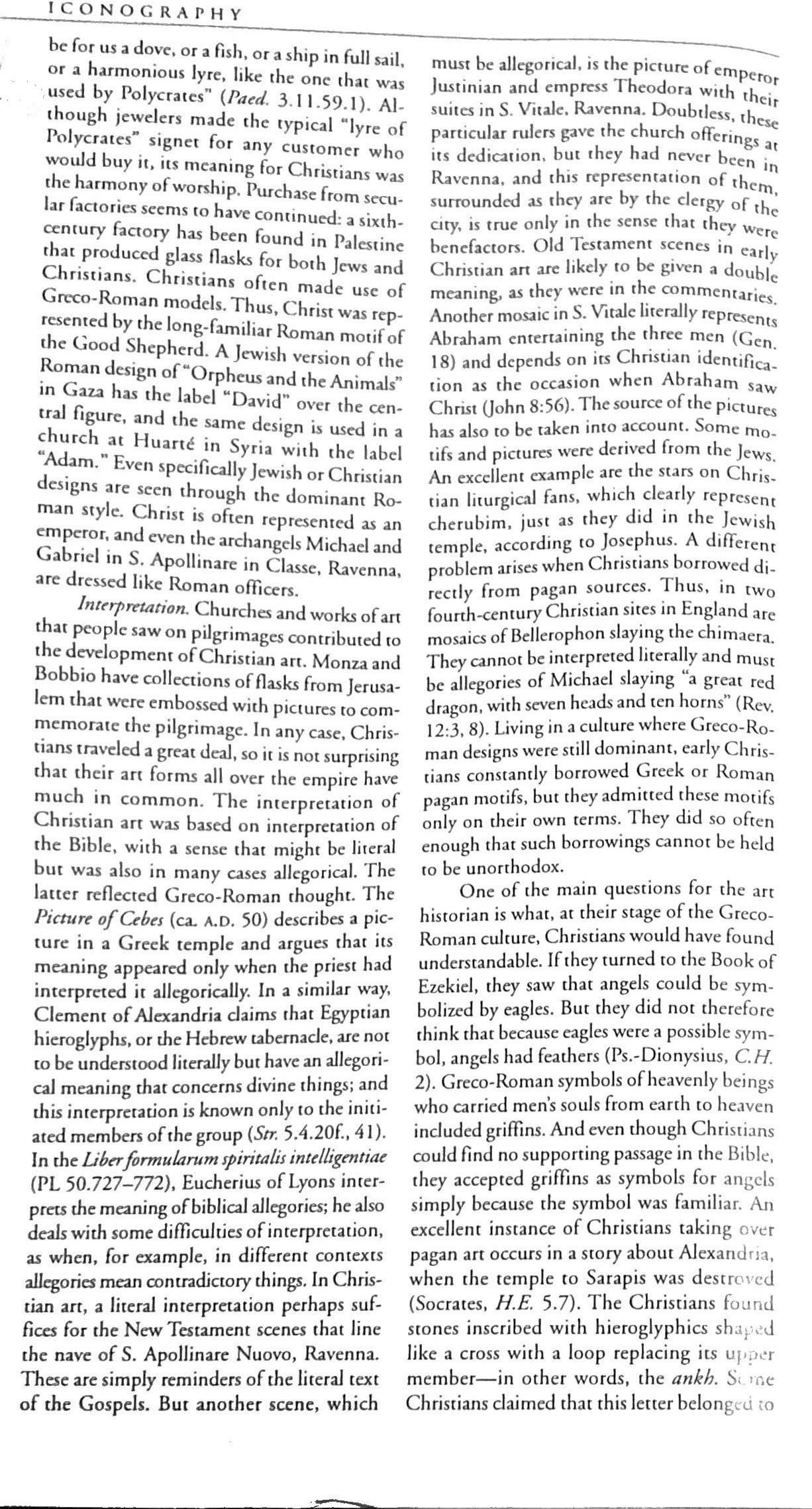John Wilkinson said that two fourth-century mosaics that show the allegory of Michael slaying "a great red dragon."
- Type
- Book
- Source
- John Wilkinson Non-LDS
- Hearsay
- DirectSecondary
- Reference
John Wilkinson, “Iconography,” in Encyclopedia of Early Christianity, ed. Everett Ferguson, 2nd edition (New York: Routledge, 1999), 558
- Scribe/Publisher
- Routledge
- People
- John Wilkinson
- Audience
- Reading Public
- Transcription
Old Testament scenes in early Christian art are likely to be given a double meaning as they were in the commentaries. Another mosaic, in S. Vitale literally represents Abraham entertaining the three men (Gen. 18) and depends on its Christian identification as the occasion when Abraham saw Christ (John 8:56). The source of the pictures has also to be taken into account. Some motifs and pictures were derived from te Jews. An excellent example are the stars on Christian liturgical fans, which clearly represent cherubim, just as they did in the Jewish temple, according to Josephus. A different problem arises when Christians borrowed directly from pagan sources. Thus, in two fourth-century Christian sites in England are mosaics of Bellerophon slaying the chimera. They cannot be interpreted literally and must be allegories of Michael slaying “a great red dragon, with seven heads and ten horns” (Rev. 12:3, 8). Living in a culture where Greco-Roman designs were still dominant, early Christians constantly borrowed Greek or Roman pagan motifs, but they admitted these motifs only on their own terms. They did so often enough that such borrowings cannot be held to be unorthodoxy.
- Citations in Mormonr Qnas
The B. H. Roberts Foundation is not owned by, operated by, or affiliated with the Church of Jesus Christ of Latter-day Saints.

